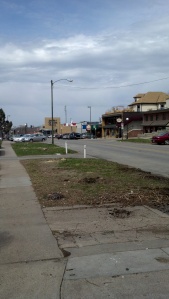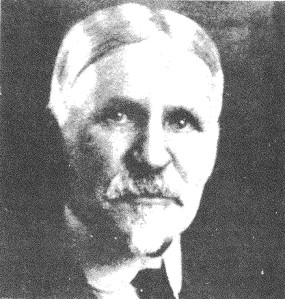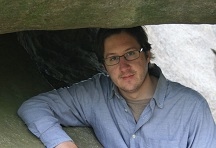by Bradley Bereitschaft
Assistant Professor, Department of Geography/Geology
University of Nebraska Omaha
 I witnessed a tragedy last week.
I witnessed a tragedy last week.
Beautiful, decades-old trees lobbed off at their bases, the shade, protection, and quiet elegance they have bestowed upon the people of Dundee lost forever.
Unbelievably, this travesty was executed upon our landscape in the name of pedestrianism. The irony is palpable.
I consider myself an environmentalist, but I am no tree hugger; my concern lies primarily with human welfare. But our health and well-being – indeed, our very survival – is inextricably linked to the complex, interconnected multitude of natural systems we call the environment.
While cutting down a few trees won’t threaten our survival, the act leaves a beloved neighborhood needlessly devoid of one of its greatest assets. The fact is, trees – large, mature trees in particular – are important for very practical reasons.
First, trees along the street help to shelter pedestrians, both from the hot summer sun and the rush of automotive traffic. It is not inaccurate to say that trees literally save lives; they provide among the most attractive and robust barriers to curb-jumpers known to man.
Perhaps just as important, trees allow pedestrians to feel safe. This encourages residents, like me, to stroll along the neighborhood’s sidewalks, sometimes for considerable distances, rather than driving. Trees practically manufacture pedestrians.
Second, trees add tremendously to the aesthetic quality of a place, and ultimately to the value of its real estate. Sure, younger trees and other shrubbery can provide greenery, but large, older trees also confer a sense of permanence and grace that cannot be manufactured nor easily replaced.
During my travels both domestic and abroad, I’ve noted time and again that one of the most universal attributes of lively, thriving pedestrian-oriented communities is the presence of mature street trees, be they silver maples or red oaks.
The loss of the trees is unfortunate enough, but even more infuriating and insulting is what is slated to take their place: parking spaces.
Let me be blunt: Dundee does not need more parking spaces. Few places in Omaha do.
Although I usually walk to Blue Line Coffee, Dundee Dell, and other neighborhood favorites, I have occasionally had to arrive by car.
Only once have I failed to secure a parking space immediately along Underwood Street. And what did I do to overcome such a dire predicament? I parked a mere block away along one of the residential side-streets. My 300-foot walk was a pleasant one, thanks in large part to the magnificent old trees lining the street.
While I encourage people from all over to come enjoy our (once) very attractive, pedestrian neighborhood, the fact is that most local businesses have done very well catering to local residents.
And this is as it should be. Before zoning codes needlessly segregated perfectly complimentary land uses, such as houses and small retail businesses, it was common to have a neighborhood bar, a neighborhood grocer, and neighborhood café all within easy walking distance.
While this “traditional,” mostly pre-war, neighborhood layout has begun to make a comeback, we also continue to build endless tracts of monotonous, auto-centric suburbs, while at the same time undermining the walkability of our most cherished, human-oriented urban landscapes.
There is no doubt that the Dundee Streetscape Improvement Plan will make it easier to find a parking space. Yet, sadly, this misguided attempt to accommodate more visitors will inevitably undermine the very pedestrian-oriented environment they have come to Dundee to enjoy.






